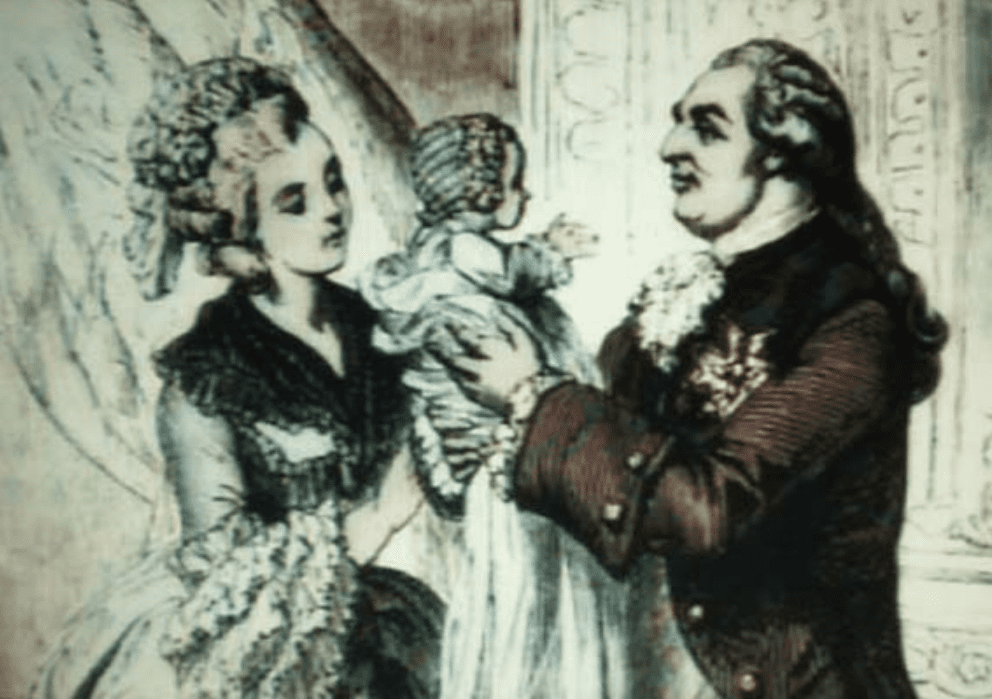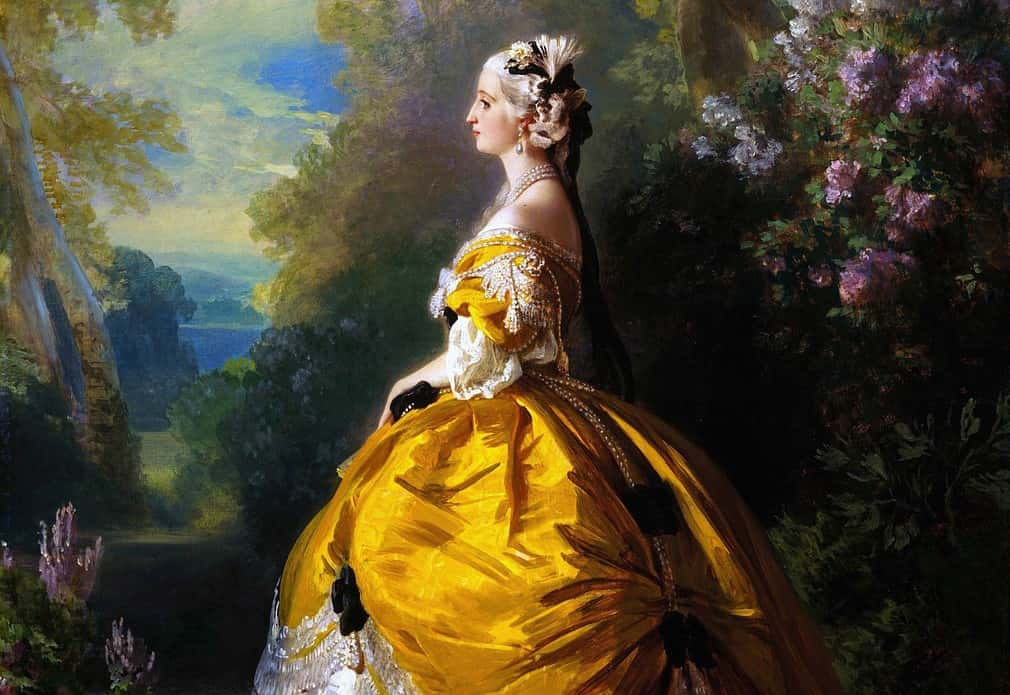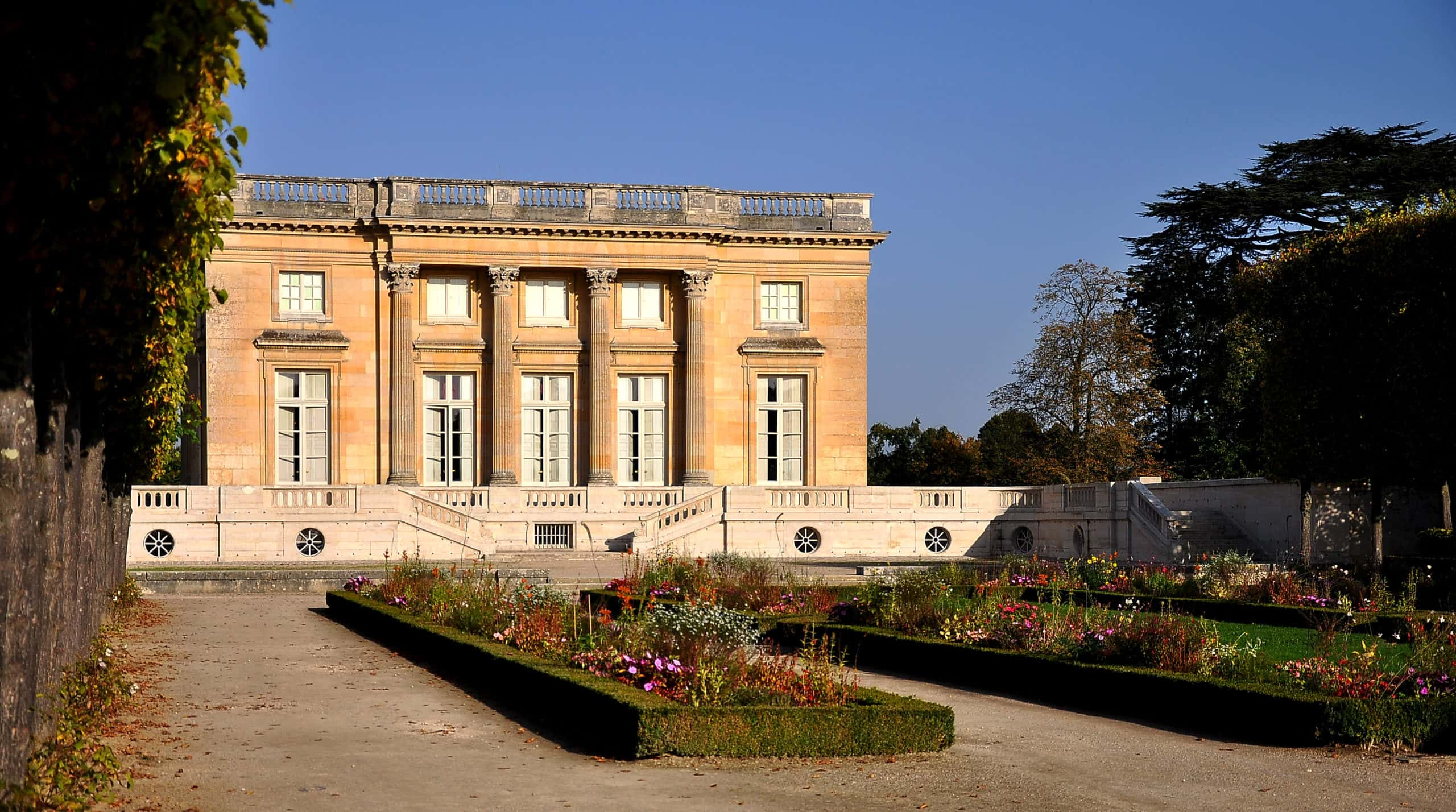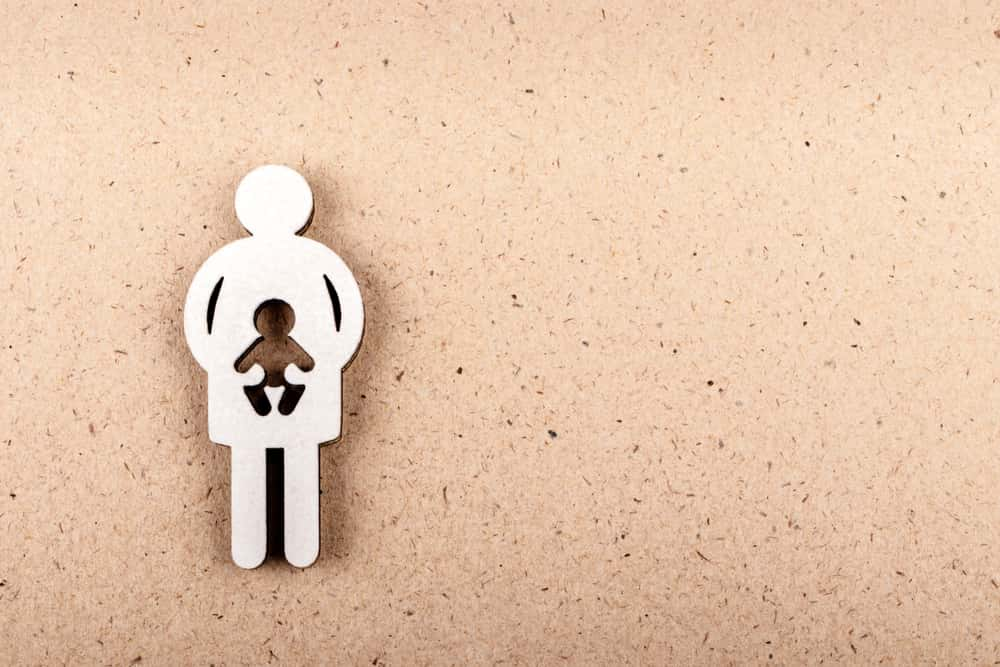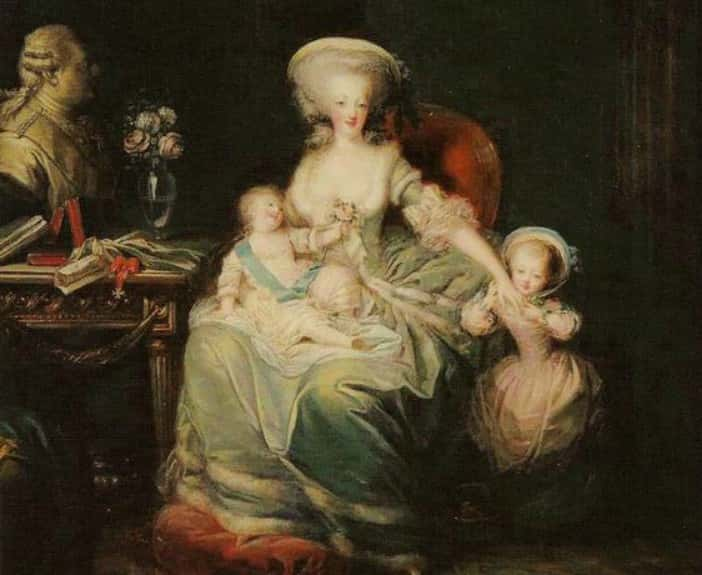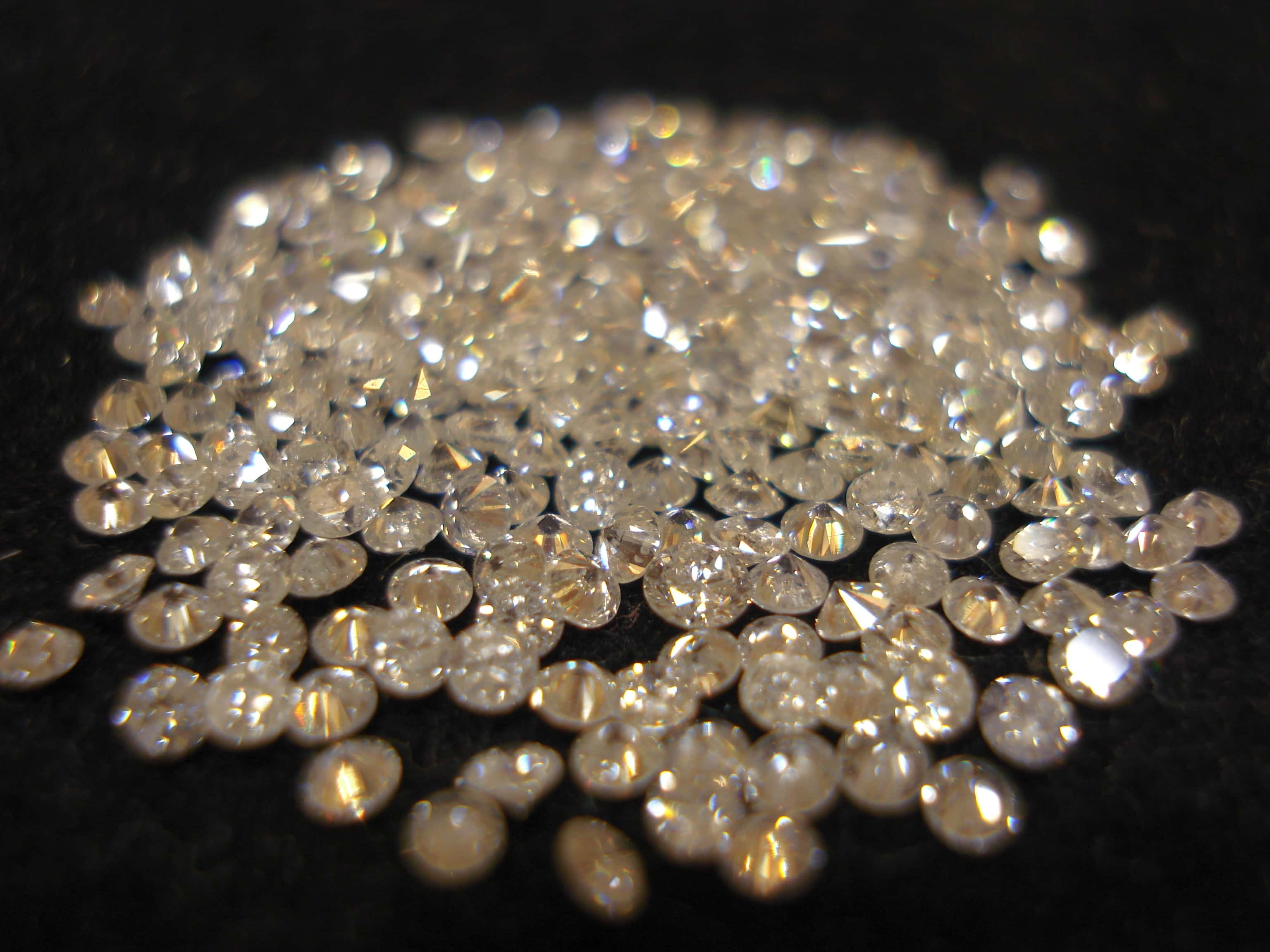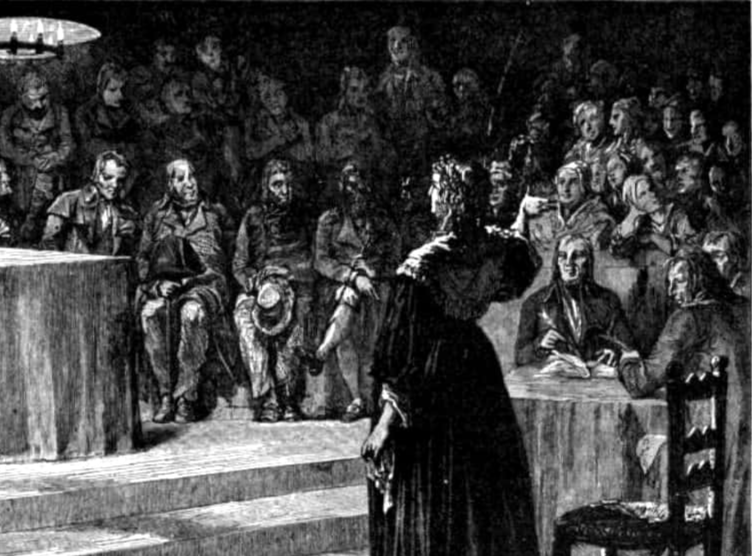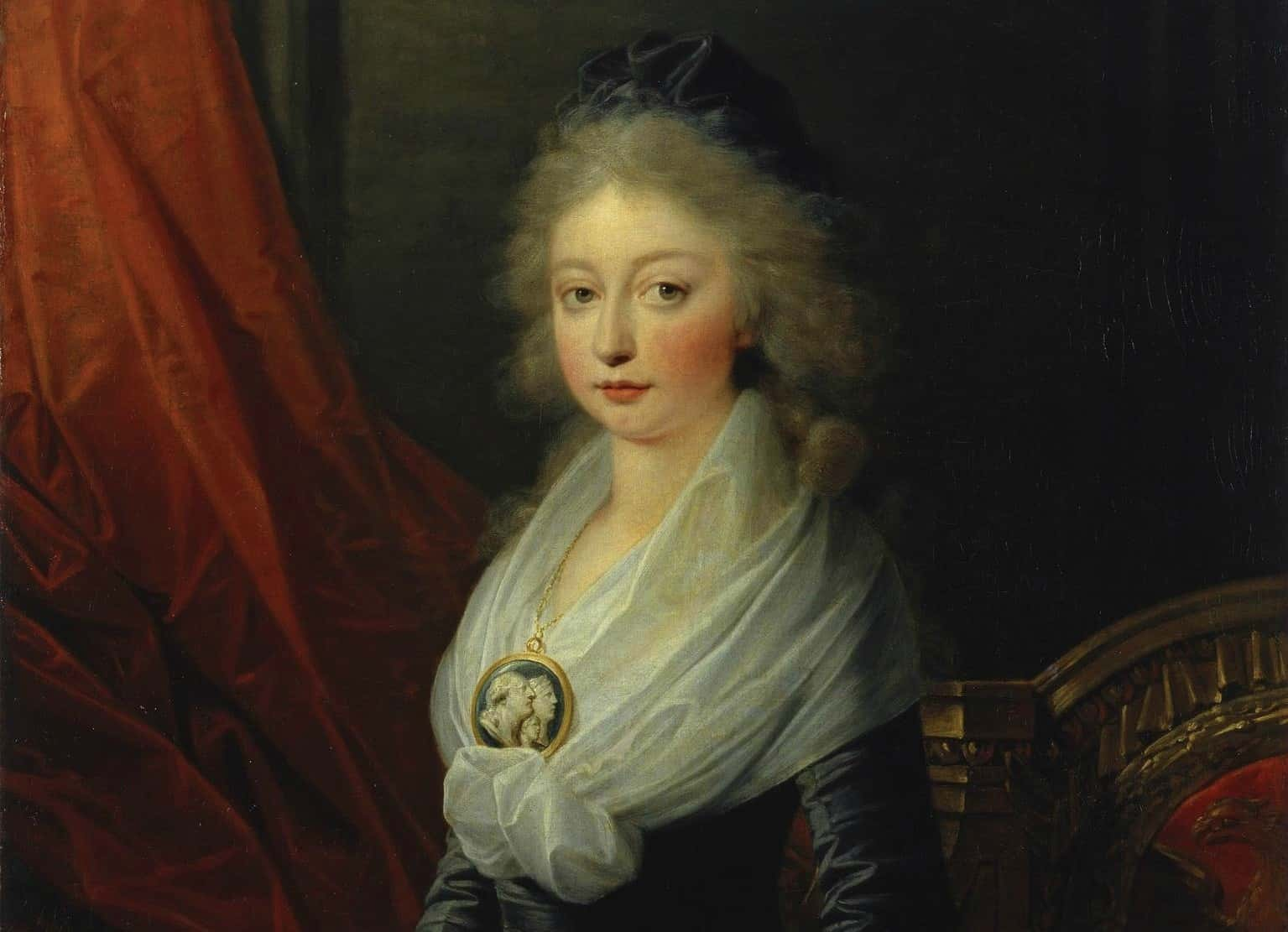From alleged affairs to escape plots, the last Queen of France led a fascinating life before the Revolution took her power—and her head. Here are luxurious facts about Marie Antoinette, the last Queen of France.
1. I Wanna Live Like the Common People
Imagine Disneyland but instead of cartoon characters, you get to interact and live like “common folk". Such was the basis of the “Hameau de la Reine,” Marie Antoinette’s most elaborate addition to Versailles. In her “hamlet,” the queen would escape from the stressful and constant need for etiquette in palace life to enact her most out-of-control fantasies, such as cleaning her own hut or making her own food.
To complete these illusions, the hamlet came with its own functioning farmhouse, lighthouse, mill, dairy, and a staff of hired “simple” folk to populate Marie Antoinette’s ideal village.

2. Child Bride
Marie Antoinette was only 14 years old when she married 15-year-old Louis XVI. Their parents had arranged the marriage to solidify an alliance between former enemies Austria and France, and their wedding ceremony took place a day after their meeting.
 Marie Antoinette (2006), Columbia Pictures
Marie Antoinette (2006), Columbia Pictures
3. Wedding Night Jitters
As was the custom, the groom's grandfather accompanied the newlyweds to their bedchamber. He blessed their bed, kissed them both, and left them to produce a royal heir. However, they were hiding a dark secret behind bedroom doors. Not only did they not have a baby, nothing physical really happened between them for seven years. Over the years, many historians have speculated why the couple didn't consummate their marriage.
4. Wait It Out
Many people suspected that the reason for the delay could have been that Louis suffered some kind of physiological disorder that would've caused him great pain down there. However, today most historians agree that it was actually just Louis's shyness, coupled with Antoinette's lack of interest in intimacy.
5. Divine Intervention
Eventually, in 1777, Marie Antoinette's brother, Joseph II, Holy Roman Emperor, came to Versailles with a dire message. He essentially told the couple to smarten up and get to work. The pressure did the trick, and their first child was born a year later.
6. Who Needs a Groom?
Marie Antoinette and Louis XVI were actually wed before they met. They were first married on April 19, 1770, by proxy in Vienna. Her older brother Archduke Ferdinand stood in for Louis, and two days later, she left Austria for France, never to return to her home country. On May 16, 1770, she and Louis were finally properly married at Versailles.
7. Proto-Imelda Marcos
It was rumored that Marie Antoinette had a shoe collection in the hundreds. However, contrary to popular belief, Marie Antoinette did not own that many shoes. Other members of the Royal family spent more on clothes than she did, including her brother-in-law, who possessed enough shoes to have a different pair every day of the year.
8. A Royal Entourage
Marie Antoinette was accompanied to France by 57 carriages, 117 footmen, and 376 horses. The royal court lavishly celebrated the wedding. Her new in-laws presented Marie Antoinette with a collection of magnificent jewels, traditionally belonging to a French Dauphine (Queen in waiting).
 Marie Antoinette (2006), Columbia Pictures
Marie Antoinette (2006), Columbia Pictures
9. The Little White Dress
The white dress that became the unofficial uniform of French Revolutionary women was first worn and designed by Marie Antoinette herself. Together with her seamstress, she designed a simple little white dress to combat the public’s idea of her as a woman addicted to excess. When she wore it, she didn’t look like a queen.
Marie Antoinette wanted the dress to make her look more like a"‘woman of the people," but the idea backfired. Many people scored her for wearing such a "downmarket" outfit.

History's most fascinating stories and darkest secrets, delivered to your inbox daily.
10. Sorta Like a Rock Star
Before she was queen, Marie Antoinette was a captivating figure to the French public. When she made her first appearance as a teenager in the French capital, the crowd of 50,000 Parisians became so rowdy that they fatally trampled at least 30 people.
 Marie Antoinette (2006), Columbia Pictures
Marie Antoinette (2006), Columbia Pictures
11. Born to Rule
Marie Antoinette was born Maria Antonia Josepha Johanna on November 2, 1755. She was the youngest daughter of Empress Maria Theresa and Emperor Francis I, making her an archduchess of Austria at birth. Her parents were no slouches in the "power" department—her mother was the ruler of the Habsburg Empire and her father was the Holy Roman Emperor at the time.
12. The Mozart Connection
When they were both children, Mozart and his sister visited Marie Antoinette at the court in Vienna and played for the Royal family. A rumor spread that the young Mozart had proposed to the future Queen, but that was far from the truth. All that really happened was that Marie's mother, the Empress, had kissed Mozart.
13. Like Having a Birthday on Christmas
Kid's birthday parties aren't necessarily a purely modern thing. Marie Antoinette had her fair share of birthday parties growing up, but never on the day of her birthday. Why? Well, she was born on All Souls Day, a Catholic day of mourning. As a result, her family always celebrated her birthday on the day before, All Saints Day.
14. A Delicate Beauty
Many people described Marie Antoinette as being "delicately beautiful". She had grey-blue eyes, ash blonde hair, and pale skin. At age 12, she had corrective surgery to straighten her crooked teeth.
15. Don’t Forget to Wear Clean Clothes!
As a child, Marie Antoinette was something of a tomboy. She would play with commoner’s children, ride horses, and hunt. Contrary to the popular image of her, her mother found it necessary to write her letters telling her to wear clean clothes and brush her hair even after she married.
 Marie Antoinette (2006), Columbia Pictures
Marie Antoinette (2006), Columbia Pictures
16. School Wasn’t Her Thing
Marie Antoinette was a poor student, despite her tutor finding her “more intelligent than has been generally supposed". He described her as “lazy” and “hard to teach,” and she supposedly had atrocious handwriting.
17. Squash the Beef
Empress Maria Theresa had a longstanding conflict with the King of France, Louis XV—but she knew they'd have to unite against another enemy, so she went to extreme lengths to end the feud. Both Maria Theresa and Louis XV were wary of Prussia and Great Britain taking any of their respective power away, so they decided to squash the beef and make peace—but Maria Theresa would have to make a great sacrifice for it.
18. The Once and Future King
Saying that they'd make peace was one thing, but they needed to do something dramatic to cement that promise. In February 1770, King Louis XV officially asked Empress Maria Theresa for her daughter's hand—not for himself, of course, but for his oldest grandson and heir, Louis-Auguste, the future King of France.
Empress Maria Theresa consented, and began to arrange to send her daughter away.
19. Shedding Austria
On May 7, 1770, as a symbolic act of loyalty at the "handover" following her marriage, Marie Antoinette was required to leave her Austrian clothes, servants, and her dog behind. The French court literally stripped her of her nationality and dressed her in French clothing. They then took her to Strasbourg for a Thanksgiving Mass in her honor.
 Marie Antoinette (2006), Columbia Pictures
Marie Antoinette (2006), Columbia Pictures
20. Gravity-Defying Hairdo
The Queen’s hairdresser Leonard Autie was responsible for creating her sky-high hairstyles which reached heights of almost four-feet high. He adorned them with feathers, trinkets, and even a model of the famous French warship La Belle Poule, after the real-life version had sunk a British frigate.
21. Taking Their Time
Marie Antoinette began her marriage to the future Louis XVI by accidentally blotting out half her name on the marriage contract. It was an ill-omen that perhaps affected the honeymoon performance. As previously mentioned, Louis and Marie shared a bed, but they would not be able to consummate their marriage for seven whole years.
22. Trial by Fire
It couldn't have been easy for Marie Antoinette to enter French royal life. Not only was she young, but she was also separated from her family for the first time. Quickly, she made a bitter and terrifying enemy. King Louis XV's mistress Madame du Barry did not take well to the young Marie's presence at court and even had one of her ladies-in-waiting exiled.
23. Unknown Pleasures
When a teenaged Marie Antoinette first asked who Madame du Barry was, a courtier replied that she “gave pleasure to the king". The green Marie’s response was mortifying. Not realizing what this “pleasure” meant, the little girl responded with a disturbing reply. She said, “Oh, then I shall be her rival, because I too wish to give pleasure to the King".
Her guffawing companion had to inform her that she’d better not give the old king that kind of pleasure.
24. The Silent Treatment
The feud between Marie Antoinette and Madame du Barry soon turned into something of a cold war. The young and easily-manipulated Marie Antoinette asked her husband's aunts what to do, and they told her to give du Barry the silent treatment. Since du Barry had some sway over the King, Marie Antoinette's choice was thought to damage any chances of advancing Austrian interests in the court.
25. Homesick
Perhaps due to her youth, Marie Antoinette did not initially adjust well to married life or life in the palace. She wrote letters home to her mother that revealed the heartbreaking truth. She was homesick and didn't care for court rituals. In one letter she wrote, “Madame, my very dear mother, I have not received one of your dear letters without having the tears come to my eyes".
26. All Is Forgiven
It was actually Marie Antoinette's mother who finally wrote to her and got her to speak to Madame du Barry. The Austrian ambassador to France worked as Empress Maria Theresa's spy in the French court, and he reported to her about the feud. She encouraged her daughter to break the silence. When they were together on New Years' Day in 1772, Marie Antoinette simply said to Madame du Barry "There are a lot of people at Versailles today".
That's all it took for Madame du Barry to chill out—but eventually, Louis XVI got vengeance for his wife.
27. Shopping Spree
History often blames Marie Antoinette’s reckless spending for the French Revolution—but the blame may actually lie more with her rival Madame du Barry. Even though King Louis XV gave his sweetums an astonishing allowance of three hundred livres a month, she somehow always managed to be in debt. This girl could spend.
28. Rise & Show
Louis XV’s Royal Opera of Versailles was built to celebrate the marriage between his grandson, then the Dauphin, and later Louis XVI, to Marie Antoinette. However, this wedding gift was also an innovation in theater tech. The opera features an orchestral floor that can be elevated to match the level of the stage and audience. Not bad for 1770.
29. ...And Stay Out!
In 1774, the elderly King Louis XV succumbed to smallpox. It took Louis XVI just two days to have Madame du Barry thrown out. She was exiled to a convent. Marie Antoinette and du Barry's other enemies were thrilled. Even though her exile ended a couple of years later, she was never allowed to return to Versailles.
30. A Parental Warning
In her role as Queen, Marie Antoinette was expected to lead, but with few royal duties, she spent her days socializing at the palace and came to develop expensive tastes. In addition to her spending on clothes, she also spent three days gambling with friends leading up to her 21st birthday. Her behavior was reported to her mother, who once again wrote her a letter telling her to smarten up.
 Marie Antoinette (2006), Columbia Pictures
Marie Antoinette (2006), Columbia Pictures
31. A Little Help From My Bro
Marie Antoinette and Louis XVI’s performance woes in the bedroom were perhaps also rooted in a simple lack of education. In 1777, shortly before the consummation, Marie Antoinette’s brother, Joseph II of the Holy Roman Empire, came to visit the Palace of Versailles. In his journal, Joseph's description of his sister and brother-in-law was devastating. He called them “complete fumblers” when it came to intercourse, and wrote about how he advised Louis to “apply himself” more.
Apparently, his advice worked, as Marie Antoinette immediately got pregnant.
32. Her Favorite Things
Marie Antoinette had a fondness for flowers. She decorated her walls with flowered wallpaper, had her furniture upholstered and painted with floral motifs, and had a flower garden of her own on her estate in Versailles. She even had a special perfume made, with a mixture of orange blossom, jasmine, iris, and rose.
33. A Chocolaty Start to the Day
Marie Antoinette also loved chocolate, and had her own chocolatier at Versailles. Her poison? Liquid chocolate, which she drank every morning with whipped cream, sometimes flavored with orange blossom. Chocolate was still a luxury for most people at the time, and her affinity for it gave revolutionaries one more reason to resent her.
34. Fostering Tragedy
In 1787, Louis XVI adopted a Senegalese slave boy named Jean Amilcar. Louis “gifted” the boy to Marie Antoinette, who insisted he instead be freed and adopted by the family—after being baptized as a Catholic, of course. Amilcar never actually lived with the royal family, unlike the three white adopted children of Louis and Marie Antoinette, but the queen still paid for his upbringing.
However, Amilcar’s fate after the French Revolution proved bleak. When his boarding school fees could no longer be paid after his adoptive parents were executed, they through Amilcar out into the streets where he reportedly starved and perished.
35. Opposites…Attract?
When it came to personalities, Marie Antoinette and Louis XVI were opposites. Whereas Louis was introverted, Antoinette was gregarious, extroverted, and confident—a true social butterfly. They also kept different schedules, with him going to bed early and her going out to party. These differences may have contributed to the delay in consummating their marriage.
 Marie Antoinette (2006), Columbia Pictures
Marie Antoinette (2006), Columbia Pictures
36. Elaborate Etiquette
When you're a queen, getting dressed in the morning can be an utterly tedious affair. Marie Antoninette's ladies-in-waiting helped her out of bed each morning and dressed her. The lady with the highest rank would hand Marie her bloomers, another could tie her petticoats after a different one had to put them on her.
Finding it hard to take, she eventually talked her ladies-in-waiting into allowing her to bathe solo.
 Marie Antoinette (2006), Columbia Pictures
Marie Antoinette (2006), Columbia Pictures
37. Unfortunately Loyal
Under the twisted politics of 18th century France, Louis endangered his wife by not cheating on her. In the reigns before, lewd pamphlets would evenly distribute their political frustration between the queen and the king’s favored mistresses. While the Versailles kings before him (Louis XIV, “The Sun King,” and Louis XV) were legendary womanizers, Louis XVI stayed loyal to his wife Marie Antoinette for their entire lives—putting them both in grave danger.
38. Can I Get a Witness?
Unfortunately, Louis XVI's fidelity to Marie Antoinette left no other woman in Louis’s life to blame for female influence. Thus, his queen bore the full brunt of anti-woman criticism which followed every king. The pamphlets were propaganda that portrayed the Queen as immoral. They were a way for revolutionaries to "prove" that the monarchy was corrupt, and insinuated that she slept with several men and women, including her brother-in-law.
The pamphlets were especially lewd, and probably colored the enduring legacy of Marie Antoinette as a “cause” of France’s woes, as opposed to just a bystander to generations-old inequality.
39. Bird in a Cage
Whenever she felt trapped by court life, Marie Antoinette escaped to her private mini chateau, the Petit Trianon, on the grounds of the Palace of Versailles. Marie Antoinette did not allow anyone to enter the grounds without her express permission, and only people from her inner circle were invited. The interiors reflected her desire for privacy, and it was a place of refuge for her.
40. This is Where I Go to Cry
Marie Antoinette also kept her own damp cave, I mean, private grotto on palace grounds. The hole was overgrown with vegetation and guarded by vines and branches. We aren’t 100% sure why Marie Antoinette had this thing, other than she thought it was neat. Sounds more pleasant than the Playboy Mansion grotto.
41. He Ain't Heavy, He's My Brother
When Marie Antoinette became pregnant after years of marriage, it finally took some of the pressure off of her and her husband—but there was trouble around the corner. Her brother, who by that time was Holy Roman Emperor, made a claim for the throne of Bavaria. Many back home in Austria considered Marie Antoinette to be something of a dud—she hadn't advanced their political interests at all in France, even though she could've easily persuaded her husband to help.
Well, she finally stepped up and begged Louis XVI to back her brother. It worked, and he ruled over Bavaria's subjects. While it was a win for Austria, it didn't endear her to the French people—the ones she really needed to impress.
42. Who's Your Daddy
Marie Antoinette gave birth to Princess Marie-Therese Charlotte in December 1778—but very quickly, controversy arose. The people who produced the pamphlets which slandered her began to spread dark rumors that the child wasn't actually Louis XVI's. True or not, it didn't much help her public image.
Was Fond of Children
Marie Antoinette loved children, and adopted a number of children during her reign. When one of her maids passed on, she adopted the woman’s daughter, and the girl grew up with Marie’s own daughter. She also adopted the three children of a deceased usher and his wife. Two of the children entered a convent, which the Queen paid for, and the third became a companion for her son Louis-Charles.
43. Kind and Generous
Although political pamphleteers of the time enjoyed portraying Marie Antoinette as a villain, in reality, she was incredibly kind and generous. Once, while on a carriage ride, one of her attendants ran over a winegrower in his fields. She personally attended to the injured man, and paid for his care and to support his family until he was better.
 Marie Antoinette (2006), Columbia Pictures
Marie Antoinette (2006), Columbia Pictures
44. Charitable Donations
Along with her husband, Marie Antoinette was a generous philanthropist. She established a home for unwed mothers and supported the Maison Philanthropique, which took care of the aged, the widowed, and the blind. During the famine of 1787, she sold the royal flatware in order to provide grain to families who were struggling.
45. Keep Your Friends Close
Marie Antoinette actually had a hand in the American Revolution. She began to play a larger role in politics in the early 1780s, and she worked to secure an alliance between France, Austria, and Russia. This neutral coalition, along with a few French troopers that she nominated to fight alongside George Washington, all helped in the American Revolutionary War.
46. Fashion Her Way
Marie Antoinette was a fashion trendsetter, and frequently defied court etiquette and fashion to dress in a more casual manner. She set a standard that the ladies of Versailles scrambled to keep up with, and at the same time, scandalizing others with her style.
47. You Can't Sit With Us
With Marie Antoinette's increased power in government, she made a move that ended up shooting herself in the foot. She helped nominate a number of ministers to government who were conservative and adverse to change. In particular, one of her ministers blocked commoners from achieving more important positions in the army.
While the French citizens were increasingly concerned with the concept of “equality,” Marie Antoinette’s political picks were sending a very clear message that they did not consider regular citizens their equals.
48. Heir to the Throne
In 1779, Marie Antoinette became pregnant again. She was overjoyed, but her happiness quickly turned to sorrow when she miscarried. It took her two more years to get pregnant again, but this time she carried the child to term. In October 1781, a new dauphin was born: Louis Joseph Xavier François.
49. It Wasn't me
During her reign, Marie Antoinette became a hate symbol for those wishing to overthrow the privilege and power of the French Aristocracy. French society suffered from a deep class divide and she became known as Madame Deficit for her lavish spending. When she spent money refurbishing the Palace of Versailles, and her mini-estate, the Petit Trianon, it angered her subjects.
The previous King had built the Petit Trianon for his mistress, but it later became associated with the Queen, and how out of touch with reality she was.
50. Mommy's Little Girl
Mother and daughter hadn’t seen each other since Marie Antoinette left Austria, but she was still incredibly close to Empress Maria Theresa. Sadly, the empress passed on in 1780 in Vienna. Suddenly, Marie Antoinette was not only heartbroken—she was in grave danger. The loss of her mother meant that the Holy Roman Empire could cut their losses with France at any moment.
 Wikimedia Commons, Dennis Jarvis
Wikimedia Commons, Dennis Jarvis
51. I'll Scratch Your Back
Despite the fact that the popularity of Louis XVI and Marie Antoinette was waning in France, Marie’s brother, the Holy Roman Emperor Joseph II, reassured her that he intended to keep the alliance between France and Austria strong. He even visited her in 1781, but dark rumors followed the siblings, and she was accused of sneaking him money from the French treasury.
52. Just Can’t Win
You know you’re in trouble when the Wikipedia article about you has a heading titled “Declining Popularity". In the early 1780s, she was working on the construction of her “hameau,” which drew great criticism from the public, and the pamphlets about her were at their lewdest. At this point in her life, Marie Antoinette’s problems were not only political—they were also personal. It all came to a head in 1783.
53. Comings and Goings
In June of 1783, she suffered a miscarriage. Soon after, her close friend Count Axel von Fersen returned to Versailles after years of absence. His presence in the court brought her great joy—and also great sorrow—but more on that later.
54. Loss Upon Loss
Exactly nine months after Fersen’s return to the court—hmm—Marie Antoinette gave birth to her third child, Louis-Charles. A year later, she had another child, Marie Sophie Hélène Béatrix, but the little girl only lived 11 months. Two years later, her first son passed on as well, leaving her with just two children—little Marie-Thérèse-Charlotte and Louis-Charles.
55. Did I Do That?
Just before his passing, King Louis XV commissioned a massively expensive diamond necklace for Madame du Barry. When it was finally finished years later, the jewelers tried to foist it off on Marie Antoinette, who refused du Barry’s sloppy seconds. Antoinette's actions triggered the infamous and utterly scandalous Affair of the Diamond Necklace.
56. Stuck in the Middle With You
During the affair, a con woman posing as a now-approving Marie Antoinette procured the necklace from the desperate jewelers and promptly sold it off on the black market. Voila, Marie Antoinette had yet another reason to hate Madame du Barry. Though the fraud was eventually exposed and the Queen proved innocent, the damage was done.
It became one of the factors leading to the dissolution of the old order, and to the French Revolution.
 Wikimedia Commons, Chateau de Breteuil
Wikimedia Commons, Chateau de Breteuil
57. We Gotta Get Out of This Place
It was clear that a revolution was brewing, and Marie Antoinette wanted to strike it down with an iron fist. She enlisted the help of Swedish fighters, but it was too late. On July 14, 1789, revolutionaries stormed the Bastille. All of a sudden, Marie Antoinette and her husband were in greater danger than ever before.
Aristocrats fled the capital in droves, but she stayed behind with her husband. It was a missed opportunity.

58. Royally Evicted
When her son the Dauphin passed from tuberculosis at the age of 7, Marie Antoinette was devastated—but her subjects barely noticed. There was a massive shortage of bread, and it all culminated in the infamous 1789 Women’s March on Versailles. On October 5, 1779, the women infiltrated the palace at dawn and made an attempt on Marie Antoinette’s life.
The protest was a reaction to the decadence of French monarchists while the people were starving. After the situation settled down, the royal family made their way to the Tuileries Palace in Paris. They would never return to Versailles again.

59. Doesn't Sound Like Something I'd Say
Marie Antoinette never actually said “Let them Eat Cake,” which ironically, is her most famous quote. Allegedly, that was her response after she was told that the peasants had no bread and were hungry. Many have used it as an example of her insensitivity to the plight of her subjects. However, there’s no historical evidence that she actually said that from any newspapers, pamphlets, and other printed materials of the time.
It’s likely that revolutionaries picked up the quote and falsely spread it as propaganda.
60. A Woman of Action
When Revolution threatened to break out in France, Marie Antoinette took action to try and save her family. While Louis XVI was indecisive, she wrote letters to other rulers asking for military support, and conducted many meetings to try and salvage the monarchy.
61. Thin Line Between Love and Hate
It wasn’t quite the end for Marie Antoinette and her husband yet—they were still rulers, but the government had become a Constitutional Monarchy. Marie was forced to play nice with the Marquis de Lafayette, who was named warden of the royal family, even though the pair detested each other. Either way, the propaganda pamphlets accused the pair of having an affair, and even published that Marie Antoinette was secretly having passionate trysts with an English baroness.
62. It’s Not Over Until…
There were small periods of peace during this time, and during the first anniversary of the Storming of the Bastille, the royals were even cheered, but soon enough, it was clear that Marie Antoinette needed to get out of dodge. While she negotiated with some of the less fervent revolutionaries, it was actually her close friend Count Fersen who helped formulate a plan.
63. Flight, Not Fight
In June 1791, Louis attempted a plan that became known as the failed “Flight to Varennes". The plan was to smuggle the royal family away to Marie’s family in Austria, that August where they would hopefully find protection and assemble an army to recapture France. It was a poorly executed plan, and they were caught after one day. News spread about the escape, and on their journey back to Paris, they were booed and jeered—but it was about to get worse.
64. White Lightning
When they arrived in Paris, they were met with eerie silence from their subjects, but it was clear that the failed escape was the last straw. As one of Marie Antoinette's ladies-in-waiting later claimed, the Queen's hair went white overnight from the stress of it all.
65. Tug of War
Marie Antoinette still had family ties to the Austrian crown even though her brother had passed on. His successors worked fervently to keep the French monarchy in power, seeing it as an opportunity for themselves to perhaps get a piece of the French pie. In retaliation, France raised arms against Austria in 1792, and Marie Antoinette was viewed as being on the Austrian side—even though she actually wasn't.

66. Madame Veto
At this time, with the country straining under the pressure of debt and a stagnating economy, Louis XVI proposed reforms to end the worst of the excesses, and to impose a more progressive taxation system. The reforms were blocked by clergymen and the nobility, but the press blamed Marie Antoinette, labeling her “Madame Veto". There’s little evidence to prove whether or not she ever did veto the proposals.
67. The First Axe Falls
In 1792, a mob stormed the Tuilleries where Marie Antoinette was staying and threatened her. In response, a group of powers from the area wrote a manifesto that threatened invasion if anything were to happen to the royal family. It all came to a head when the Garde national apprehended the King and Queen in August 1792. A group of men took one of her ladies-in-waiting and beheaded the woman, parading her remains through the streets.
Soon after, the fall of the monarchy was officially declared: Marie Antoinette was no longer a queen.
68. Name Change, Game Change
In late 1792, a tribunal charged Louis XVI with undermining the First French Republic. They found him guilty at his trial and beheaded him by guillotine. Marie Antoinette was now "the Widow Capet".

69. Not Without Her Children
Some conversative factions and religious groups wanted to help the doomed Queen escape after her arrest. Sadly, she refused to leave France without her children. She responded to her would-be rescuers in writing, stating: "I could not have any pleasure in the world if I abandoned my children. I do not even have any regrets".
70. Brainwashed
In the final months before she was charged and tried, Marie Antoinette's surviving son, Louis-Charles, was ripped from her arms and taken so that he could be "educated" to side with the revolutionaries. She would spend hours looking out her window for him, but he was quickly indoctrinated, and came to blame her for all of France's problems.
71. It Wasn’t Her Fault
Despite claims from sources such as Mary Wollstonecraft and Thomas Jefferson, Marie Antoinette’s excessive spending was not the true cause of the French Revolution. When she and Louis XVI took the throne, the country was already broke, and the treasuries were empty. While her spending certainly didn’t help France’s economic problems, it didn’t break the proverbial bank.
Louis’ unpopular and expensive decision to send battalions to America to help with the American Revolution had cost much more, but Marie Antoinette made an easy scapegoat.
72. The Carnation Affair
On August 29, 1793, a man named Alexandre Gonsse de Rougeville passed Marie Antoinette a secret message hidden inside the petals of a carnation. He was an ardent supporter of the Queen. His message told her to prepare herself for rescue. The plan failed when guards caught her reply, which she had pin-pricked into a piece of paper.
73. Nine Months for a Two Day Trial
The Revolutionary Tribunal took nine months to put Marie Antoinette on trial on made-up charges after her husband's execution. The Tribunal charged her with: orchestrating bacchanals in Versailles, sending money to Austria, planning the slaughter of the gardes françaises (National Guards) in 1792, declaring her son to be the new king of France. Publishers of propaganda pamphlets had previously accused her of many of the same thing.
74. Appeal to All Mothers
At Marie Antoinette’s trial, there was an even more shocking accusation. She was accused of having an inappropriate relationship with her own son, Louis-Charles...and he was the one who brought the charges. When facing the accusations, her reply forced the courtroom to fall silent in shame. She said “Nature refuses to answer such a charge brought against a mother. I appeal in this matter to all the mothers present in court".
It's likely that he was pressured into making the accusation by the radical who controlled him.

75. That Was Quick
Following a two day trial, a jury found the former queen guilty on all charges and sentenced her to die. Her captors executed her mere hours after her trial.
76. The Last Letter
Shortly before her execution, Marie Antoinette begged the warden for a pen and some paper, and she proceeded to write a letter to her sister-in-law Elisabeth known as her “Testament". She wrote of her love for her friends and family, and asked that her children not seek revenge for her execution. Reportedly, after finishing the letter, she kissed each page repeatedly and returned it to the warden.
The revolutionaries confiscated the letter and Elisabeth never received it.
 Marie Antoinette (2006), Columbia Pictures
Marie Antoinette (2006), Columbia Pictures
77. Courage, My Word
Moments before her execution, the priest present at the execution told her to have courage. She responded by saying "Courage? The moment when my ills are going to end is not the moment when courage is going to fail me".

78. Vive La Republique!
On the day of her execution, the revolutionaries put Marie Antoinette in a tumbrel. a two-wheeled cart used during the French Revolution to take prisoners to the guillotine. They took her on a roundabout route through the city to the guillotine. Afterward, they showed her head to thousands of spectators, who cried “Vive la Republique".

79. The Last Princess
Louis and Marie Antoinette had four children. Louis-Charles lived for two more year's after his mother's execution, leaving Marie Thérèse Charlotte as the only child to survive past the age of 11. She was the sole survivor of “The Reign of Terror". Her caretakers withheld the information about her parents from her until she was safe.
They then sent her to her mother’s family in Vienna, where she stayed until the Bourbon restoration.
80. Buried and Dug Up
After her execution, those in charge placed Marie Antoinette’s body in a coffin and put it into a common grave behind the Church of Madeline. In 1815, the Bourbon Restoration returned Louis XVIII to the throne. He ordered the exhumation of the bodies of his brother Louis XVI and Marie Antoinette. Then he had the bodies re-buried with the other royals in the Basilica Cathedral of Saint-Denis.
 Wikimedia Commons, Eric Pouhier
Wikimedia Commons, Eric Pouhier
81. Miss Apparition
If you ever visit Versailles, keep an eye out for the headless ghost of Marie Antoinette. Tourists often spot her in the famous gardens, or just outside her bedrooms. Maybe she forgot something?
82. I Saw Marie Antoinette Wearing Army Pants and Flip-Flops
When Marie Antoinette first came to Paris, she wanted to ride horses to celebrate her arrival, but there were strong objections because of fears that she could be harmed while riding. As a compromise, she agreed to ride donkeys instead, and this resulted in her ladies and Louis XV’s daughters riding donkeys as well. This wound up starting a trend among French noblewomen.
83. The Secret Affair
Perhaps because of her strange relationship with her husband, Marie Antoinette’s love life has been the subject of speculation for centuries. In 2016, newly decoded letters reveal that she was hiding a dark secret behind bedroom doors. The letters suggest that the Queen had a passionate affair with a Swedish Count named Axel von Fersen.
In one letter to him, she wrote: “I will end [this letter] but not without telling you, my dear and gentle friend, that I love you madly and that there is never a moment in which I do not adore you".
84. Who's Your Daddy?
Interestingly enough, the new revelations also suggest that Count Fersen fathered her daughter Sophie, who perished as a baby. Those inside and outside the royal court also speculated that he may have fathered her second son, Louis Charles.
85. Pardon Me Sir!
Marie Antoinette’s upbringing instilled in her a courtesy for apologizing for minor mistakes. After Marie Antoinette stepped on the executioner’s foot, she apologized to him. Sadly, she spoke her final words to him: “Pardon me sir, I meant not to do it".
Sources: 1, 2, 3, 4, 5, 6, 7, 8, 9, 10, 11, 12, 13, 14, 15, 16, 17, 18, 19, 20, 21, 22, 23, 24




